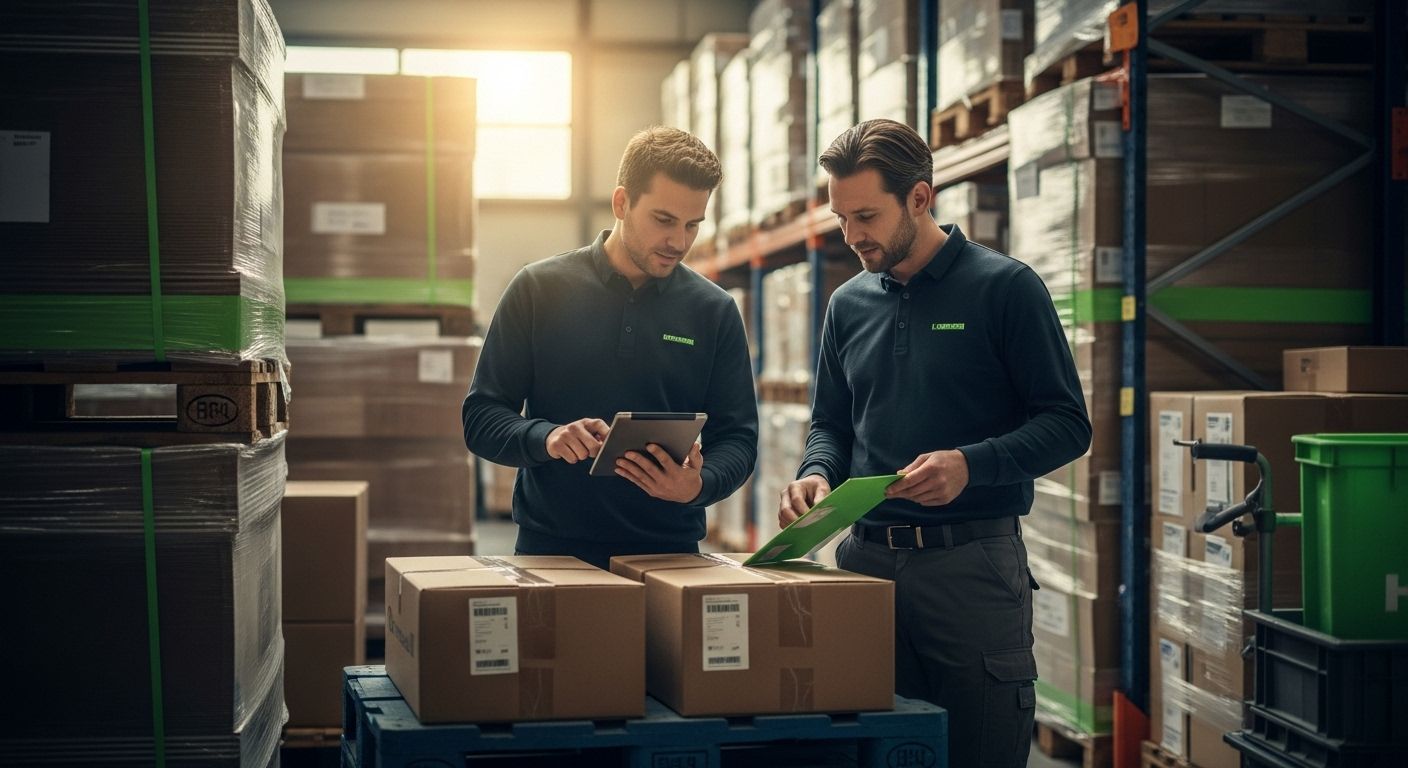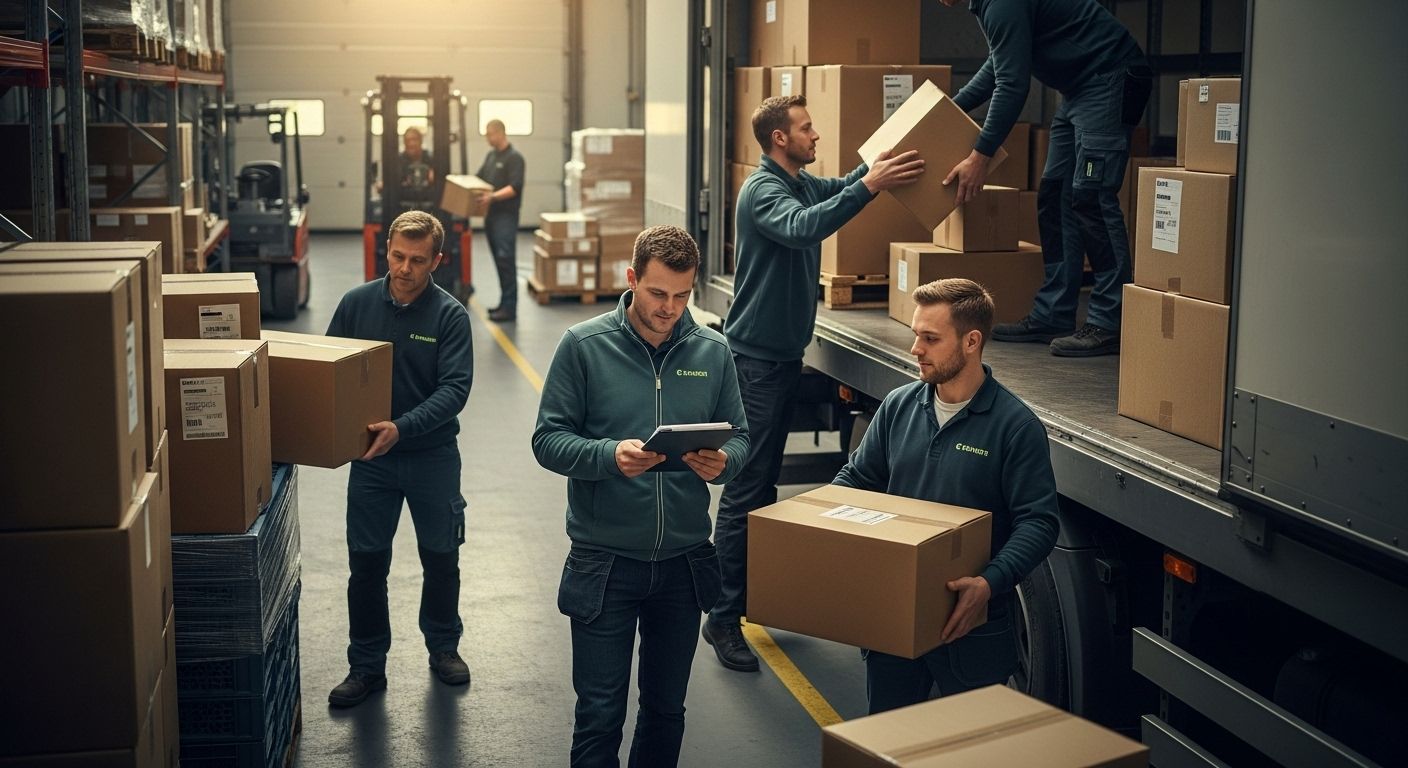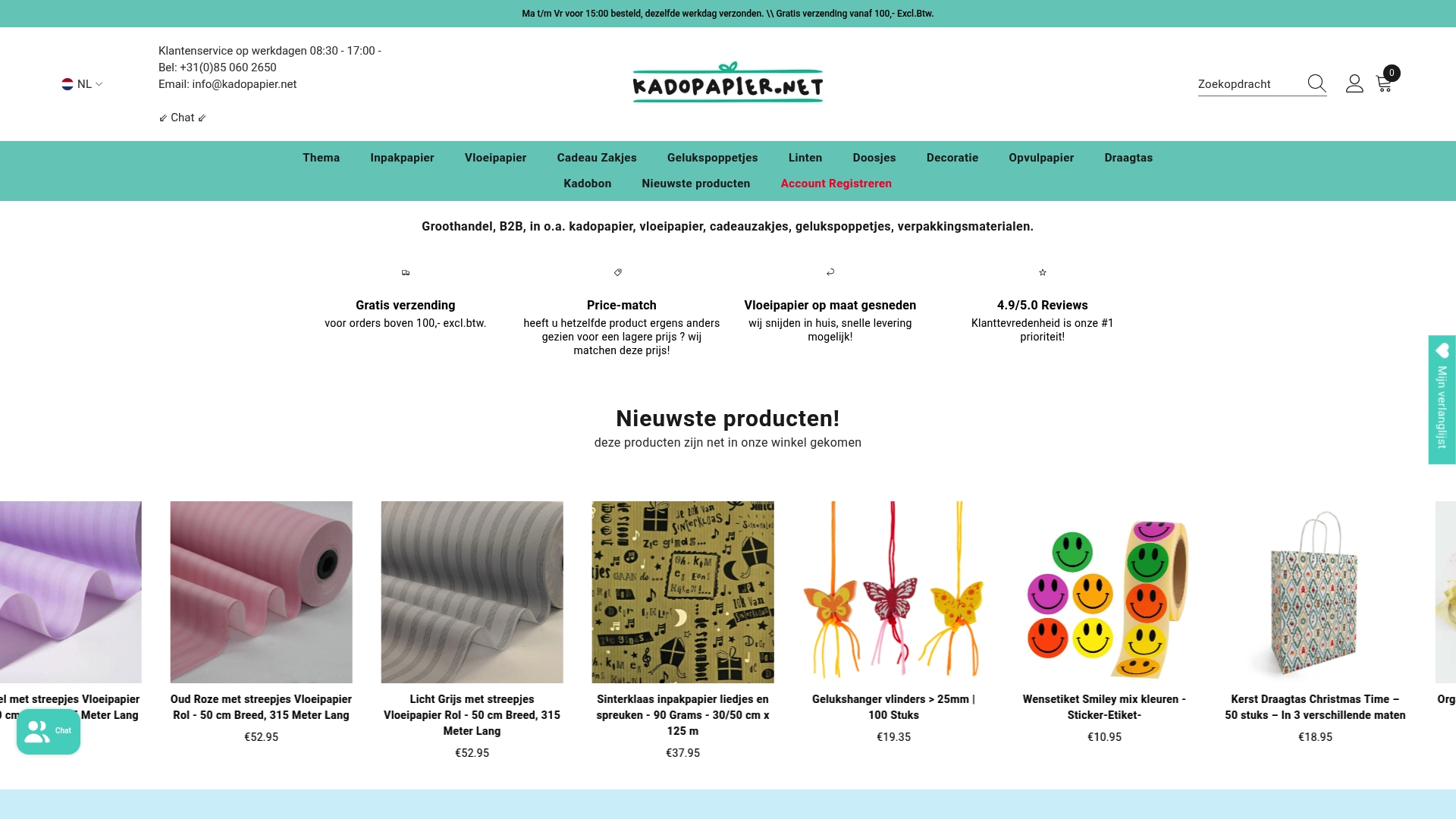Industry Packaging Regulations Understood: What You Need to Know

Industry packaging regulations dictate exactly how products safely and efficiently reach stores and consumers. You might think this mostly revolves around boxes and tape, as everyone knows. But did you know that proper compliance with packaging standards reduces transport damage by up to 40 percent ? It turns out these regulations have a much greater impact on safety, cost savings, and environmental protection than most people expect.
Table of contents
- What are industry packaging regulations?
- Why are industry packaging regulations important?
- How do industry packaging regulations work in practice?
- Key concepts within industry packaging regulations
- The impact of industrial packaging regulations on different sectors
Short Summary
| Conclusion | Explanation |
|---|---|
| Safety is paramount | Industrial packaging regulations ensure product safety and consumer protection by setting specific requirements. |
| Standardization promotes efficiency | Standardized packaging optimizes transport costs and improves logistics processes. |
| Sustainability is a focus point | Modern packaging regulations encourage environmentally friendly and recyclable materials to reduce ecological impact. |
| Regulations require constant monitoring | Manufacturers must continuously monitor quality and make adjustments as standards and technologies evolve. |
| Specific requirements per sector | Each sector, such as food and electronics, has unique packaging regulations that meet specific challenges. |
What are industry packaging regulations?
Industrial packaging regulations are detailed rules and standards that determine how products should be packaged safely and correctly for transport, storage, and distribution. These regulations are a vital part of the industrial infrastructure and ensure consistency, safety, and quality control across various sectors.
Definition and Scope
Industrial packaging regulations include detailed technical specifications covering the use of materials, design, strength, labeling, and handling of packaging. They are not simply guidelines, but legally established standards that manufacturers, shippers, and retailers must adhere to. According toregulations from the U.S. Department of Transportation, these regulations must consider:
- Protection of the product against external influences
- Safety during transport and storage
- Environmental and sustainability considerations
- Maintaining product integrity
Function and Importance
Packaging regulations fulfill several crucial functions in modern industry. They not only protect products but also ensure standardization and security in the supply chain. Product safety is central to these regulations, which impose specific requirements on material strength, impact resistance, and protection from external influences.
The main objectives of these regulations are:
- Preventing product damage during transport
- Ensuring safety for employees and consumers
- Limiting environmental risks
- Facilitating efficient logistics processes
Industrial packaging regulations are dynamic and continuously evolving with technological advances and changing market needs. They form a critical infrastructure that protects the quality and safety of products across various sectors.
Below you will find an overview of the key functions and purposes of industry packaging regulations to quickly understand their role within the industry.
| Function / Purpose | Short Explanation |
|---|---|
| Product safety | Protect against external influences and maintain product integrity |
| Standardization | Ensuring uniform processes within the supply chain |
| Risk management | Minimizing damage, contamination and health risks |
| Economic efficiency | Optimizing transport costs and logistics performance |
| Environmental protection | Reducing the ecological footprint and promoting sustainability |
| Quality control | Continuous monitoring and adjustments based on regulations |
Why are industry packaging regulations important?
Industrial packaging regulations are crucial for ensuring safety, quality, and efficiency in the modern economic infrastructure. They are an essential part of the industrial supply chain, providing protection, standardization, and risk minimization for products and consumers.
Safety and Risk Management
One of the primary reasons for industry packaging regulations is to ensure safety. Research into the European Packaging Directive shows that proper packaging standards are vital for preventing health risks and product contamination. Safety aspects include:
- Protection against chemical migration
- Preventing physical damage to products
- Ensuring hygienic transport conditions
- Eliminating potential contamination risks
Economic and Logistical Efficiency
Packaging regulations contribute significantly to economic efficiency. Standardized packaging formats and material specifications optimize transportation costs and streamline logistics processes. This results in significant cost savings for companies and improved supply chain performance.
The economic benefits include:

- Reduction of transport damage
- Improving storage efficiency
- Optimization of space usage
- Acceleration of loading and unloading processes
Environment and Sustainability
Modern packaging regulations increasingly emphasize sustainability and environmental considerations. They encourage the use of recyclable materials, limit waste, and compel manufacturers to develop more environmentally friendly packaging solutions. Sustainability goals include reducing plastic use, promoting reuse, and minimizing the environmental footprint of packaging.
By applying strict regulations, industry packaging regulations not only protect products and consumers but also contribute to broader societal and economic goals.
![]()
How do industry packaging regulations work in practice?
Industrial packaging regulations are implemented in practice through a complex system of regulations, testing, certification, and continuous monitoring. This multi-layered process ensures that packaging meets the highest standards of safety, quality, and performance.
Development and Specification
Practical functionality begins with detailed design specifications. According to the International Safe Transit Association, manufacturers must follow standardized testing protocols that evaluate the suitability of packaging materials and designs. Design requirements include:
- Material quality and composition
- Mechanical load capacity
- Resistance to external influences
- Compatibility with specific products
Certification and Quality Control
After development, a rigorous certification process follows. Independent inspection bodies conduct extensive testing to ensure that packaging meets all legal and industry standards. Companies must submit detailed documentation and have physical prototypes tested for:
- Shock resistance
- Temperature resistance
- Moisture resistance
- Transport load capacity
Compliance and Continuous Monitoring
Industry packaging regulations require continuous monitoring and adaptation. Manufacturers must conduct regular quality checks and update their packaging designs based on new technological insights and changing regulations. Sustainability is playing an increasingly important role in this, with a growing focus on environmentally friendly and recyclable packaging solutions.
This multi-layered and dynamic approach ensures that industry packaging regulations continuously improve packaging quality, safety and sustainability across various economic sectors.
Key concepts within industry packaging regulations
Industrial packaging regulations form a complex system of standardized guidelines essential for product safety, transport, and environmental protection. These regulations encompass several fundamental concepts that form the basis for effective and responsible packaging solutions.
Material Qualification and Compatibility
According to international packaging standards, material qualification is a critical concept within industry packaging regulations. Material compatibility determines the suitability of packaging materials for specific products and transport conditions. Manufacturers must consider:
- Chemical stability of the material
- Interaction with packaged products
- Resistance to external influences
- Suitability for different temperature conditions
Classification and Type Designation
Another fundamental concept is the classification and type designation of packaging. This system helps identify specific packaging properties and applications. Learn more about the different packaging classifications that influence the selection and suitability of packaging materials. Classification criteria include:
- Material strength
- Taxability
- Protection level
- Reusability
Environmental and Sustainability Considerations
Modern industrial packaging regulations increasingly emphasize the environment and sustainability. Sustainability criteria are integrated into the development of packaging guidelines, with special attention to:
- Recyclability of materials
- Reduction of environmental impact
- Use of biodegradable components
- Minimizing packaging waste
These concepts form the fundamental building blocks of modern industrial packaging regulations, where continuous innovation and adaptation are central to ensuring product safety and environmental protection.
The impact of industrial packaging regulations on different sectors
Industrial packaging regulations have a profound impact on various economic sectors, with each business domain developing unique challenges and adaptation strategies to meet the complex regulatory demands.
Food and Pharmaceutical Industry
According to international food safety standards, packaging regulations play a crucial role in protecting public health and product quality. Specific requirements include:
- Strict hygiene standards
- Protection against microbiological contamination
- Material compatibility with food and drugs
- Accurate labeling of ingredients
Transport and Logistics
In the transport and logistics sector, packaging regulations are forcing companies to develop standardized and secure packaging solutions. Learn more about innovative packaging solutions that are transforming the sector. Transport-related aspects include:
- Shock resistance of packaging
- Weight optimization
- Compatibility with international transport standards
- Environmentally friendly material choices
Electronics and Technology Sectors
For the electronics and technology industries, packaging regulations are crucial for protecting sensitive equipment from external influences. Protection criteria include:
- Electrostatic discharge prevention
- Protection against moisture and temperature fluctuations
- Materials that do not cause chemical reactions
- Recyclability of packaging materials
Through continuous adaptation and innovation, industry packaging regulations help sectors improve product safety, sustainability, and efficiency, while protecting consumers and the environment.
This table provides a clear overview of the impact and key packaging requirements by sector, allowing you to quickly compare the differences between sectoral regulations.
| Sector | Main Packaging Requirements |
|---|---|
| Food & Pharmacy | Hygiene standards, protection against contamination, material compatibility, correct labeling |
| Transport & Logistics | Shock resistance, weight optimization, international compatibility, environmentally friendly material |
| Electronics & Tech | Electrostatic discharge prevention, moisture and temperature protection, chemical neutrality, recyclability |
Discover worry-free packaging solutions that seamlessly meet all regulations
Are you also struggling with the complex industrial packaging regulations mentioned in the article? Ensuring product safety, sustainability, and compliance requires reliable materials that consistently meet the requirements. Many companies struggle to choose the right packaging material that is not only strong enough but also remains suitable for transport, storage, and presentation. An incorrect choice increases the risk of damage, delays, or product rejections that comply with the latest guidelines.

Make it easy on yourself and choose from the extensive selection of high-quality packaging materials at Kadopapier.net . Whether you're looking for sturdy wrapping paper , eco-friendly tissue paper , or cardboard packaging solutions that comply with the latest regulations, you'll always find a suitable solution that meets current industry requirements. Order today and immediately ensure compliant and stylish packaging, so you avoid unnecessary risks and always meet legal packaging standards.
Frequently Asked Questions
What are industry packaging regulations?
Industrial packaging regulations are legal rules and standards that determine how products should be packaged safely and correctly for transport, storage, and distribution.
Why are industry packaging regulations important?
These regulations are essential for product safety, risk management, economic efficiency and sustainability, making them a crucial part of the modern supply chain.
How are industry packaging regulations implemented?
Packaging regulations are implemented through a multi-layered system of development, certification, quality control, and continuous monitoring to ensure compliance with regulatory and industry standards.
Which sectors are affected by industry packaging regulations?
The food, pharmaceutical, transportation and logistics sectors, as well as the electronics industry, are heavily influenced by these packaging regulations that provide guidelines for product protection and safety.
